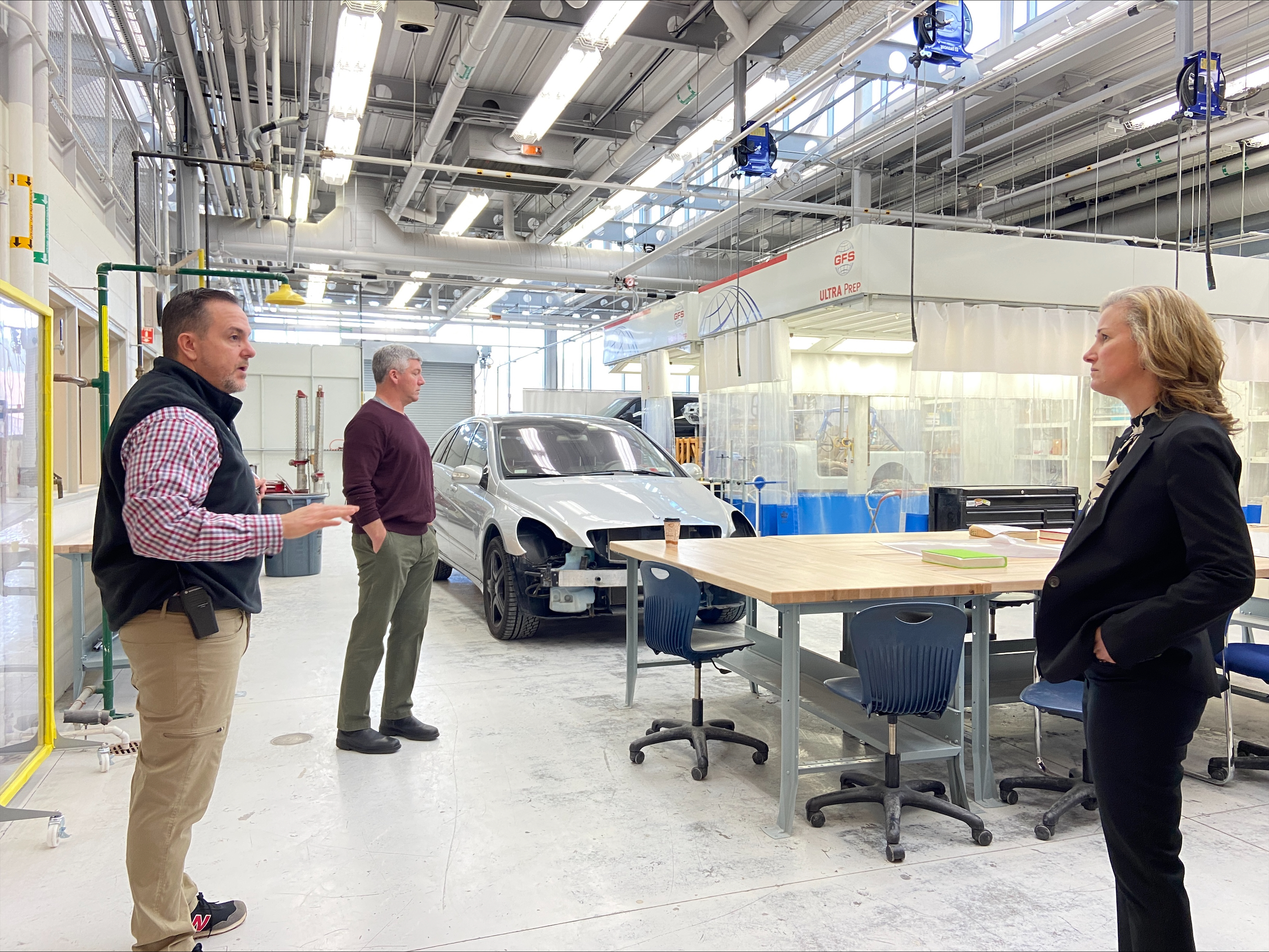Danbury, Conn. – Ahead of the 2024 General Assembly session, state Representatives Patrick Callahan (R-108) and Rachel Chaleski (R-138) met with Henry Abbott Principal Kevin Durkin. They discussed enrollment, curriculum, and the school to work pipeline, among other issues.
“I was interested to learn about how Henry Abbott functions now that the 17 technical high schools in the state have become an independent state agency and does not report to the State Department of Education as do all other public school types,” said Rep. Chaleski. “Principal Durkin told us that the transition out of state Department of Education oversight was part of a 2017 law designed to give the schools greater control over its own budget and curriculum.”
The Connecticut Technical Education and Career System (CTECS) has an executive director, a board, and a superintendent overseeing the 17 high schools at 20 locations.
Approximately 685 students are currently enrolled at Henry Abbott, with about 63% of the population from Danbury. There are no regulations on municipal ratios at the technical high schools as there are with magnet schools. While the shop areas may hold additional students, the regular education classrooms are at capacity.

“There’s great interest from students in Greater Danbury area towns to apply to Henry Abbott Tech,” said Callahan. “Not every student will be college bound and Connecticut has a lot of job openings in the very fields that this school prepares students for.”
Henry Abbott receives over 500 applications year each for the 195 open seats. The school offers 12 shop pathways, each of which have some sort of production work, including HVAC, culinary, precision machining, collision repair, and health technology, among others. All students must fulfill all academic graduation requirements of the State of Connecticut.
While taking a tour of the various departments, Callahan and Chaleski met with teachers to talk about how the legislature can help create better collaboration between CTECS and employers. They learned that the state Department of Labor is involved in signing off on the work component of the curriculum, and the students are viewed in the eyes of the law as 18-year-olds. Juniors can work up to 21 hours a week, Seniors aren’t limited in their hours. They are paid while also earning credit for school. Students can design prototypes for companies and participate in competitions and exploratory programs.

“We were asked to look into pre-apprentice and apprentice licensing because, in certain trades, they can only have one journeyman,” said Callahan.
Admissions is not a lottery system, like other choice schools. Each prospective student must submit a statement on why they want to attend, a school counselor recommendation, and provide a school attendance record. Acceptance is no longer based on academic achievement and is blind to high-needs students – reviewers don’t know if the students are English Language Learners or require Special Education services.


